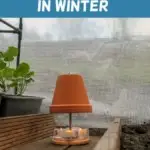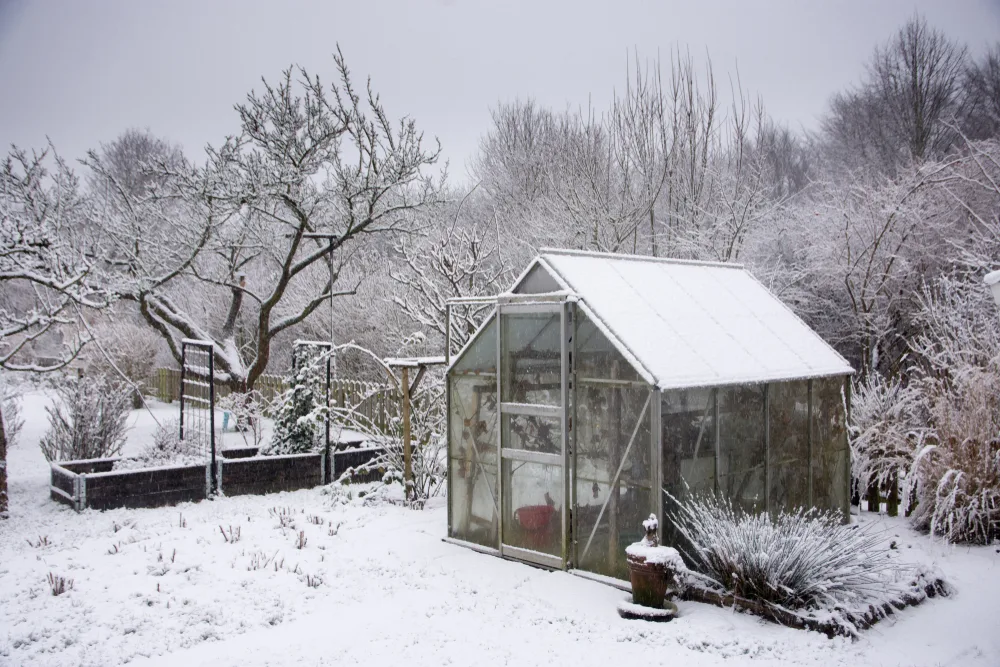
As colder weather approaches, you’re probably wondering whether your greenhouse is up to the task. Will it fend off the frosts well enough to keep your crops growing all winter long?
Whether you need to heat your greenhouse this winter will of course depend on where you live. It also (obviously) depends on what you’re growing. To a certain extent, it will also depend on the quality of your greenhouse.
Whether you bought one or made a DIY greenhouse – some are certainly better than others.
Whatever type of greenhouse you have, whether glass or plastic, you may need to think about heating it if you live in a colder climate zone. Where winter temperatures regularly drop well below freezing, some heating might be necessary to enable you to grow food year-round.
So, if you think you might need to heat your greenhouse, how do you go about doing that?
In this article, we’ll explore 7 innovative ways to heat your greenhouse during the winter. But read on, because, toward the end of this article, we’ll talk about steps you can take that means you might not need to.
7 Heating Options for Your Greenhouse
The good news is that you don’t need to rely on finite and polluting fossil fuels to heat your greenhouse in winter. The options given below are all eco-friendly options, that will work whether you are on or off-grid.
One of the options below (or a combination of two or more of these choices) could help you be kind to people and planet. And show you how, while acting ethically, you can still grow food year-round in a cold climate.
1. Hotbeds (Heat from Composting Materials)
One simple and easy way to provide some gentle heat in a greenhouse and fend off frosts is to make hotbeds.
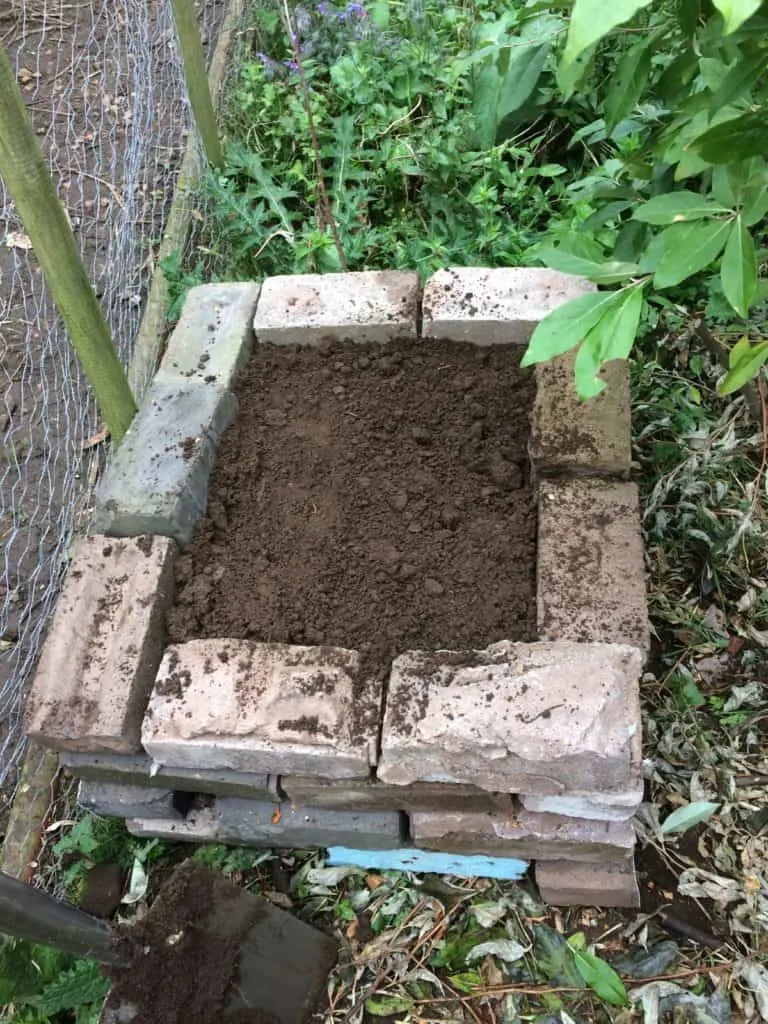
A hotbed is basically a raised bed filled with layers of decomposing straw and manure (or other organic matter), topped by a thinner layer of growing medium (soil/compost) into which plants or seeds can be placed. It’s basically a compost heap that is covered with soil/compost and used as a raised bed.
You can see my full step-by-step tutorial for making a hotbed here.
Like any other compost heap, a hotbed is built up using organic materials. Ideally, there should be a good mix of nitrogen-rich (‘green’) and carbon-rich (‘brown’) materials.
Making a Hotbed
Traditionally, a hotbed is filled with horse manure and straw. Many Victorian/ 19th Century greenhouses had beds that were made in this way. However, you don’t necessarily have to use horse manure and straw. Many different compostable materials can be used to create the same effect and generate heat.
Hotbeds provide heat from below. The heat is given off as the materials in the hotbed break down. By providing a source of gentle, natural heat, a hotbed can be an alternative to more costly methods of winter heating.
After adding your compostable materials, it’s time to top your hotbed with a mix of soil and compost. I find that a 1:1 mix is ideal. Ideally the compost should be home-made. But if you don’t yet have your own compost, be sure to source and buy a peat-free variety. (Using peat compost is terrible for the environment.)
The ratio of heat-producing material to growing medium should be 3:1, as this will help to achieve an ideal temperature of around 75 degrees F. Therefore, your growing medium of soil and compost should be around 20-30cm deep.
Cover Your Hotbed to Retain More Heat
Cover your hotbeds with cloches or row covers inside your greenhouse, and they can keep plants toasty and warm even in the coldest of environments. There are a number of different ways that you could consider covering your hotbed. You could use, for example:
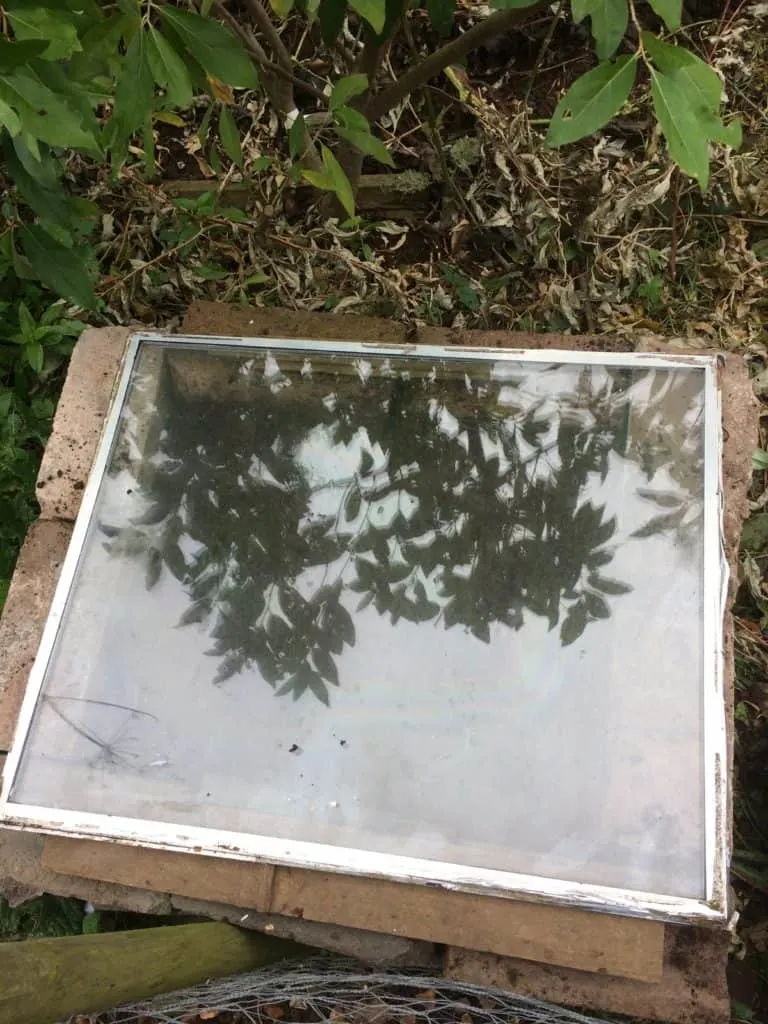
- An old glass window pane.
- A glass cloche or mini greenhouse, or ‘hot box’ as they’re sometimes called.
- Reclaimed polycarbonate sheeting.
- Plastic row cover or mini plastic polytunnel or greenhouse.
Often, you can make use of materials that would otherwise have been thrown away.
2. Hot Water Heating
Another way to provide gentle heat from below is to plumb your greenhouse beds with a hot water pipework heating system. Hot water heating systems were also common in grand 19th Century greenhouses. In those days, the water, however, was generally heated by coal boilers.
Fortunately, today, there are a few more eco-friendly ways to consider heating the water for such a system.
The first option is to construct or buy solar water heating panels. These are not solar panels for electricity generation, but rather structures that allow water to be heated by the sun. These are also called hydronic heating.
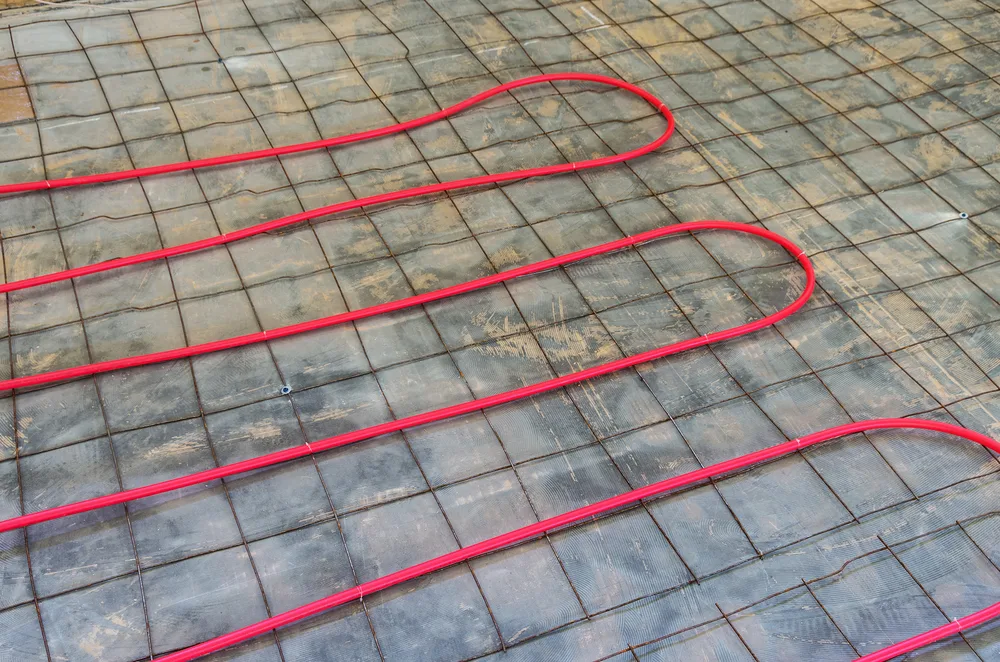
If you’re interested in taking on a DIY project, check out how to make your own direct solar water heater here:
Make a solar hot water heater @ reuk.co.uk.
If you want to heat water in a simpler and more low-tech way, another interesting thing to consider is coiling pipes inside a composting system. In any compost heap (as in the hotbed described above) heat is generated by the decomposing materials. Pass water pipes through the inside of a compost heap before running those pipes into your polytunnel and these too will transfer heat and keep soil temperatures higher than they would otherwise be.
Sometimes, solar water heating may be sufficient. In other cases, the solar water heater may be used to pre-heat water to bring water up to a higher temperature before it is sent to a boiler. (More information on boiler options can be found below.)
3. Ground To Air Heating
Plumbing into the ground below a greenhouse with pipes to carry air is another way to heat the space. A ground to air heat exchanger can make the most of the sun’s heat collected during the day inside the greenhouse.
Fans pump warm, humid air from the greenhouse through a network of pipes below the soil. There, the soil ‘collects’ the energy, which is then pumped back into the space to keep it warmer at night.
By using the right fans, and a thermostat, you can effectively regulate the temperatures inside your greenhouse and keep them right where you want them.
Another (though more expensive) option is to install a ground-source heat pump for your greenhouse. (And perhaps also for your home). In essence, this involves taking heat energy stored below the ground and drawing it up to heat covered growing areas.
4. Renewable Electricity Heating
A somewhat more conventional way to heat your polytunnel in a sustainable way is to take advantage of renewable energy sources.
Usually, this involves making use of solar energy by installing solar panels. Solar panels can be used to provide the small amounts of electricity needed to run fans or pumps for the systems described above. Or, of course, to run efficient greenhouse heaters.
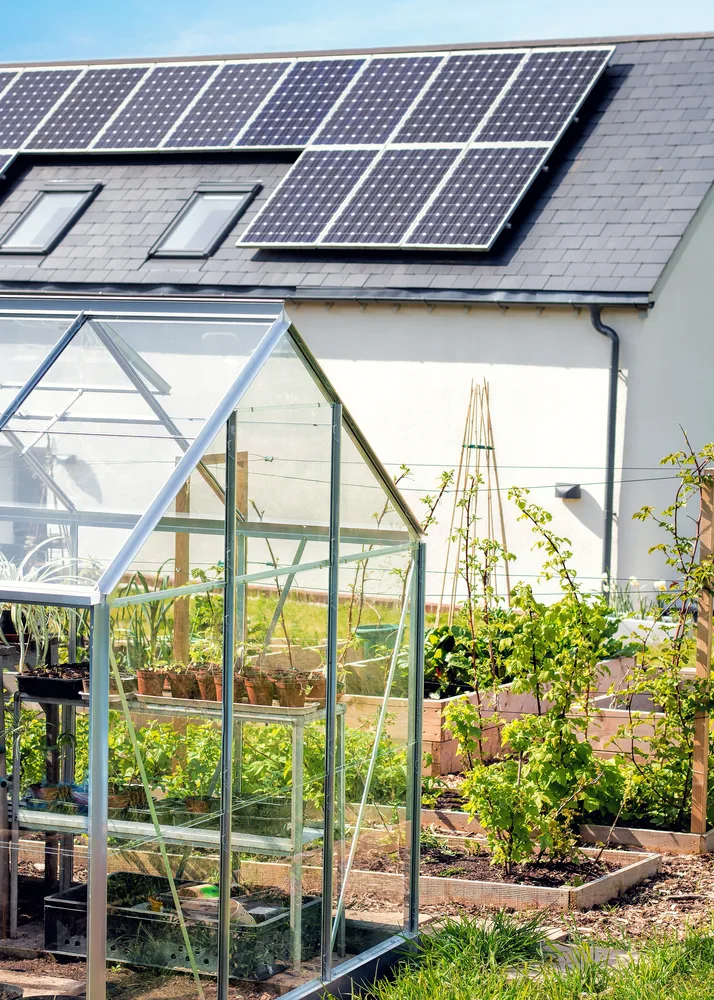
Generally speaking, it’s better to heat the soil below plants rather than heating the entirety of the greenhouse. So consider piped underground heating before looking into space heating options.
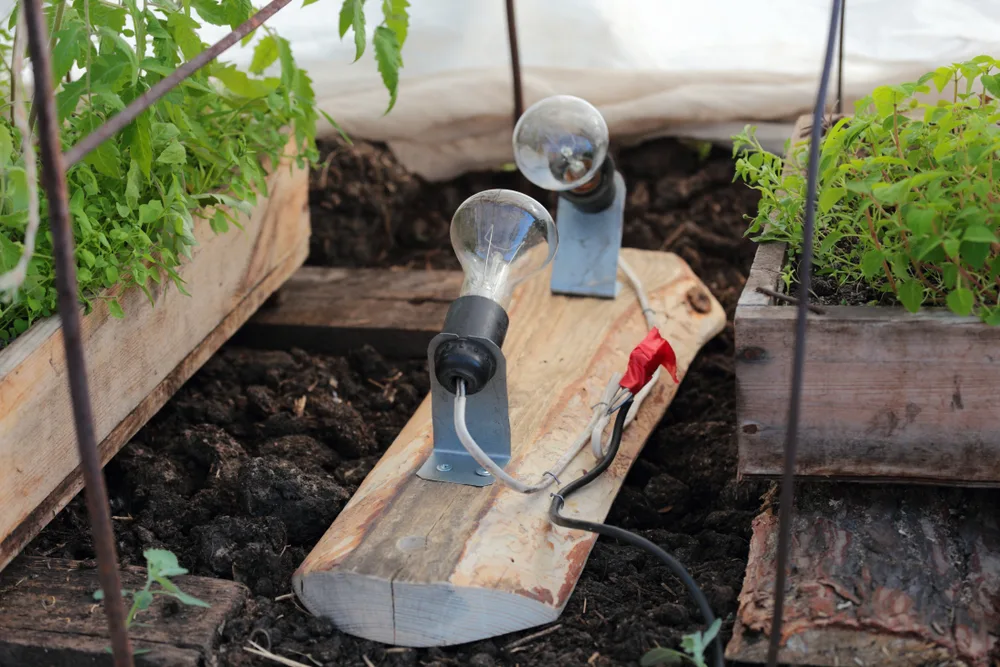
Renewable electricity (be it solar, wind or water) can be used to run an efficient electric boiler for such a system.
5. Wood-Fired/ Biomass Heating
Piped hot water to heat a greenhouse can, as mentioned, be warmed by the sun, or by decomposing materials. But if these don’t bring the water to the required temperatures, then a boiler can be used.
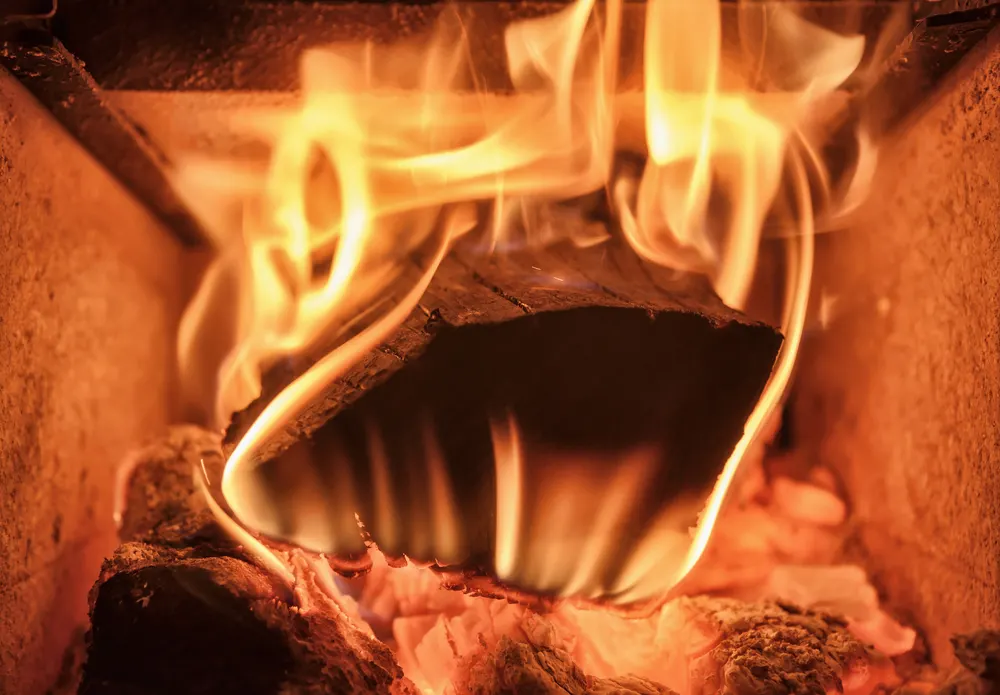
As we’ve already discussed, a boiler can be run using renewable electricity. But it’s also possible to use wood or other forms of biomass to run a boiler to heat your greenhouse.
It’s possible to create a rustic DIY system like a wood-fired boiler with old 55-gallon drums, for example. If possible, integrating greenhouse heating with a solid fuel stove in your home makes a lot of sense.
Another great way to heat your greenhouse with solid fuel is to make a rocket mass stove. A rocket mass stove combines efficient combustion with heat-retention. Planters can be made above a kind of heated shelf extending from the stove. This is a great solution where the winters are especially cold.
6. Rustic Heater With Candle and Plant Pot
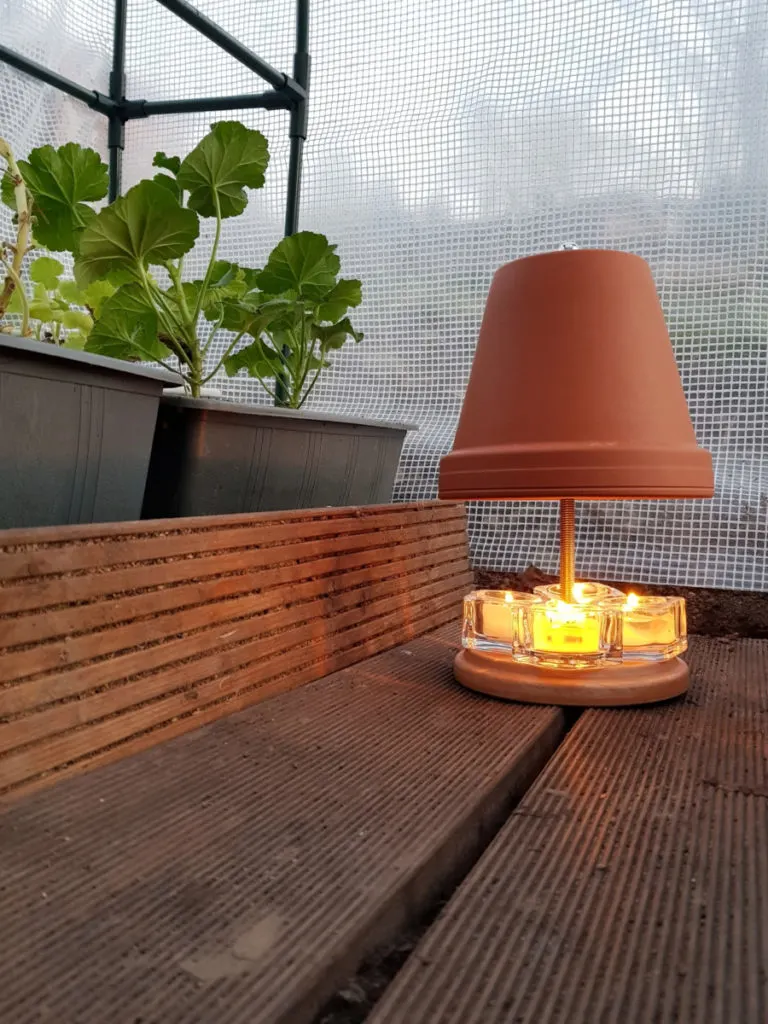
If you only have a tiny greenhouse, you may be thinking it’s hardly worth the effort to install one of the more complex heating systems described above.
Another innovative solution to consider is the height of simplicity. By placing a candle below a ceramic plant pot, you can create a tiny space heater that can warm a small space.
Of course you should be careful when using any naked flame, so this idea comes with all the usual safety caveats. But the heat generated even by a candle can be sufficient to keep a small greenhouse free from frost.
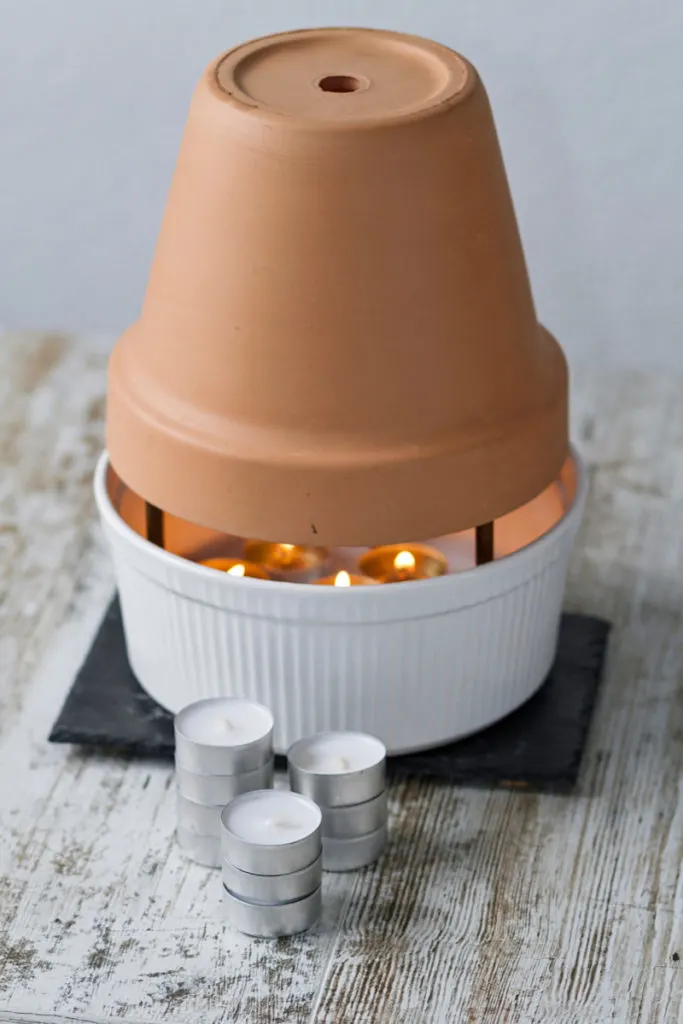
7. Heating With Livestock
Thinking outside the box, another way to keep greenhouse plants warm enough in winter is to integrate plant production with keeping livestock. Keeping chickens in one part of a greenhouse (or in an adjoining coop) while growing plants in another can be a good idea for winter growing.
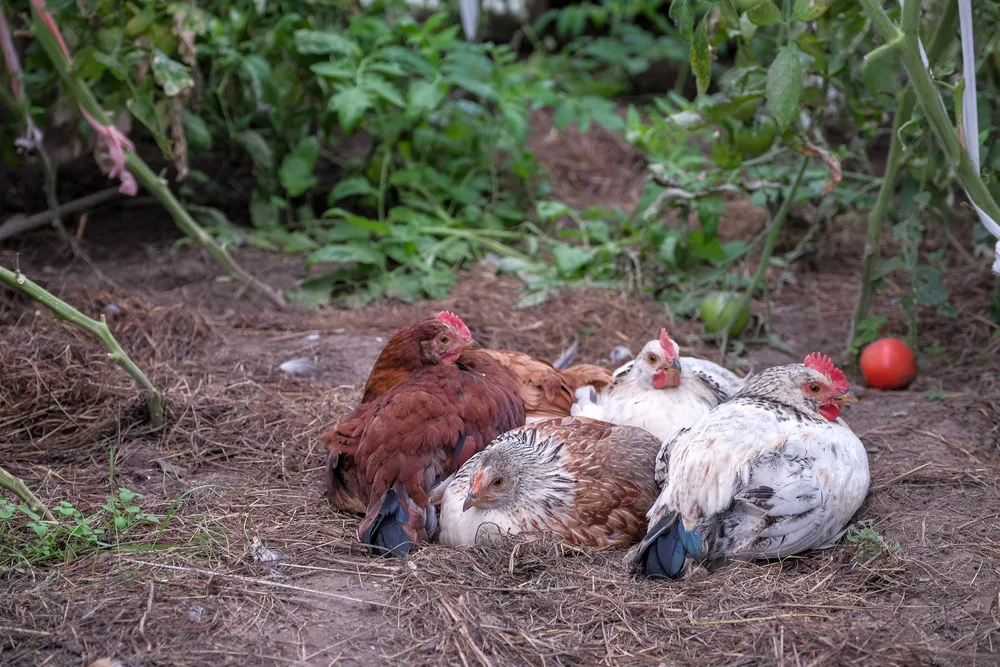
The chickens body heat (and the heat given off by their manure) can add up. And can actually raise the temperatures inside the greenhouse at night by a surprising amount. The chickens also benefit, because the greenhouse will collect heat from the sun during the day, which will help keep chickens’ housing warm too.
You might also house other livestock in one part of a greenhouse, while growing plants in another. Again, the body heat given off by the animals can help keep the greenhouse plants warm during the night.
Do You Need To Heat Your Greenhouse?
We’ve now explored some interesting solutions to heat your greenhouse in winter. But before you determine which plan is right for you, think about whether you need to heat your greenhouse at all.
Your greenhouse as it stands may already be sufficient to provide the protection required over the winter months without taking steps to raise the temperatures at all. The following steps might make it possible to avoid the need for additional heating altogether.
Choose Hardy Plants To Grow Over the Winter Months
First of all – ask yourself – are you trying to grow the right plants? Depending on your climate zone and the conditions in your polytunnel or greenhouse, think about which plants might be best to choose for an unheated greenhouse. In some areas, you’ll have plenty of options. In other colder areas, of course, you will have fewer options… but there may still be some.
Remember, it’s important to choose not just plant types but also varietals that are suited to your climate zone and area. Try to source seeds and plants from as close to home as possible. Take advice from local gardeners as to which varietals are best for your greenhouse growing over the winter months.
Add Thermal Mass To Regulate the Temperature
Before you think about any heating system, it’s important to think about how to catch the heat already in the system. Take steps to increase the thermal mass in your greenhouse.
Materials with high thermal mass catch and store the heat energy from the sun slowly during the day and release it slowly when temperatures fall at night. (The ground to air heating described above is, in essence, a way to refine and manage this natural energy flow. But there are simple and easy ways to take advantage of the same effect in a smaller way.)
Materials with high thermal mass include:
- Earth/soil/clay
- Stone
- Water
- Bricks/ ceramics
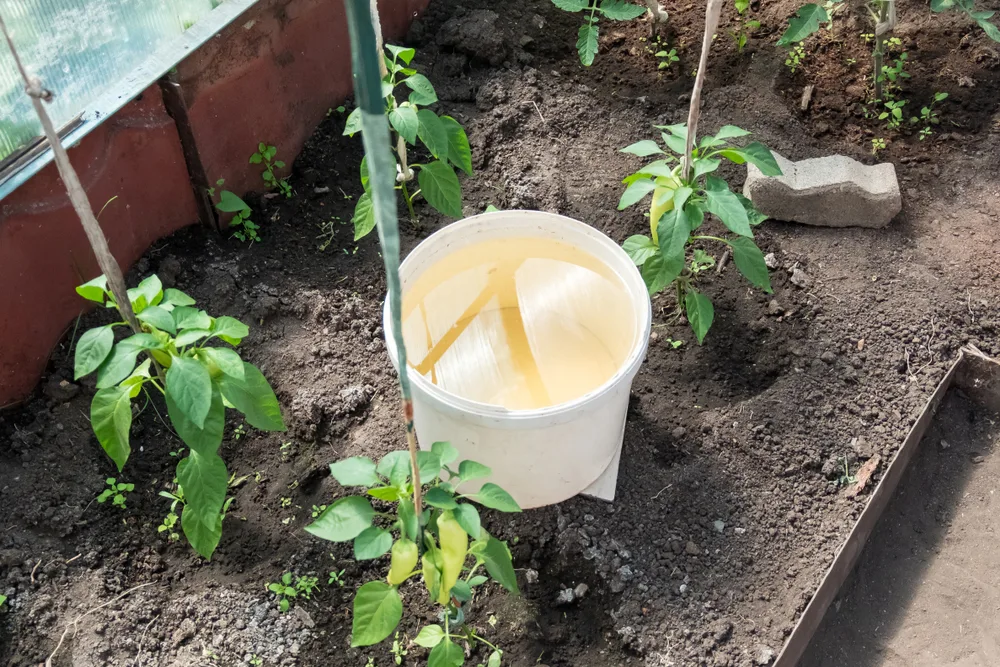
By placing more of these materials in a greenhouse, we can catch and store more energy and regulate temperatures. The more thermal mass you can add, the cooler the space will remain in summer, and the warmer it will be in winter.
Here are some things you can do to add thermal mass that could prevent the need for winter heating in a greenhouse:
- If you don’t already have a greenhouse, consider an earth-sheltered one.
- Place barrels, tanks or other containers of water inside your greenhouse.
- Add paths and bed edging made from materials with high thermal mass. (For example, make bed edging of stones, bricks, wine bottles filled with water, cob/adobe, or earth bags…)
Add Additional Insulation for Plants or your Greenhouse
Before you think about heating the space, you should also think about how to stop existing heat from escaping. A greenhouse does, of course, offer one layer of protection – though not a perfect one. Glass or clear plastic structures warm up quickly. But unfortunately, most greenhouses aren’t very good at retaining heat.
Consider creating an inner layer inside your greenhouse structure. A second layer beneath the glass or plastic already in place (with an air gap in between) can keep the space warmer all winter long. Some gardeners reuse bubble wrap and line the inside of a greenhouse with this, for example.
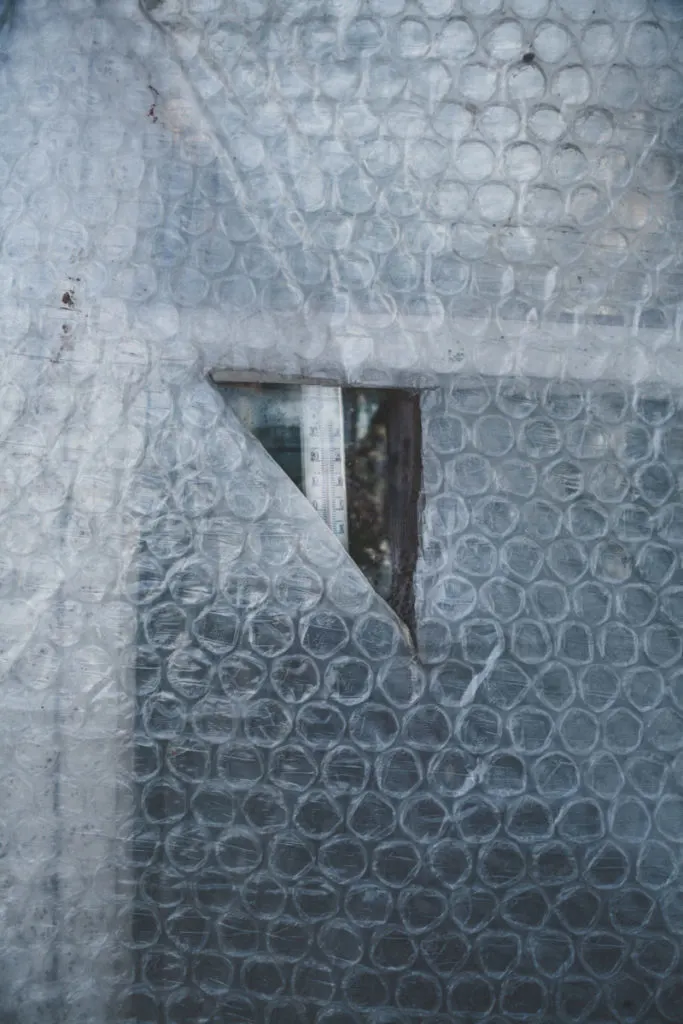
Even if you don’t have the time or resources to make a double-skinned greenhouse for this winter, you can still add extra layers of insulation for individual plants. You can, for example:
- Use small cloches (plastic drinks bottles, old milk containers, etc..) to protect individual plants.
- Cover individual plants with horticultural fleece (or upcycle old clothing or textiles for the purpose).
- Use row covers or mini-polytunnels inside your greenhouse for an extra layer of protection against the cold.
Add Mulches to Protect Plant Roots
Another way to protect plants over the winter months is to use mulches to protect plant roots. Laying a thick mulch or ground cover over the soil can help avoid the need for extra heating.
For example, it could allow you to successfully overwinter root crops and alliums in colder climates without finding a way to heat your greenhouse.
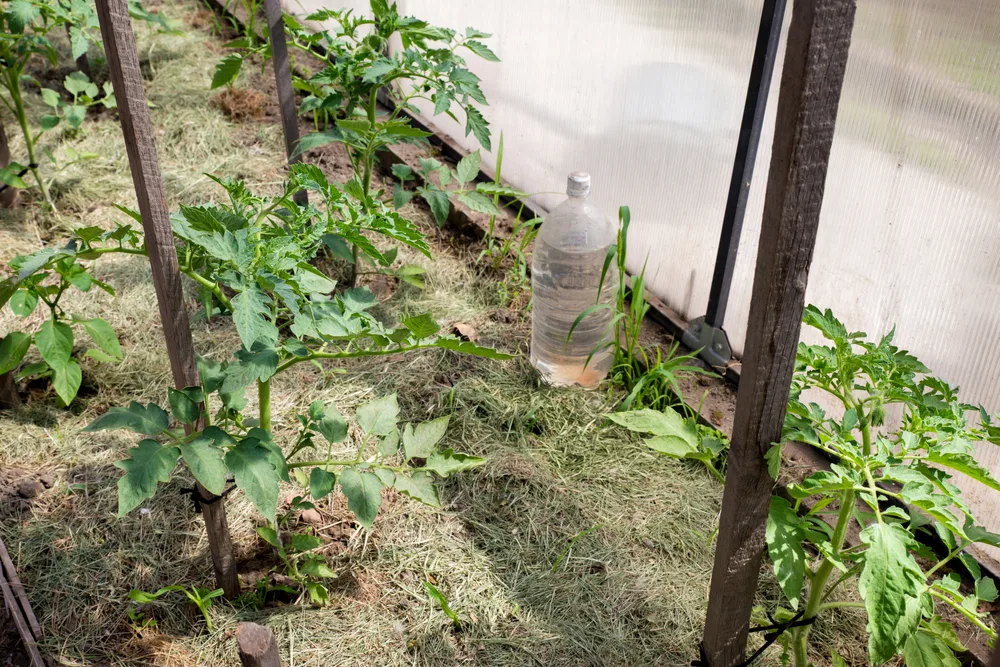
Mulches that could be useful for this purpose include: straw, bracken and sheep’s wool, for example. Here’s a full list of garden mulches to consider.
Whether or not you actually need to heat your greenhouse this winter, think about heat energy – where it comes from and where it goes. This can help you make the best choices long term – both for your own growing endeavours, and for future generations.

Get the famous Rural Sprout newsletter delivered to your inbox.
Including Sunday musings from our editor, Tracey, as well as “What’s Up Wednesday” our roundup of what’s in season and new article updates and alerts.


